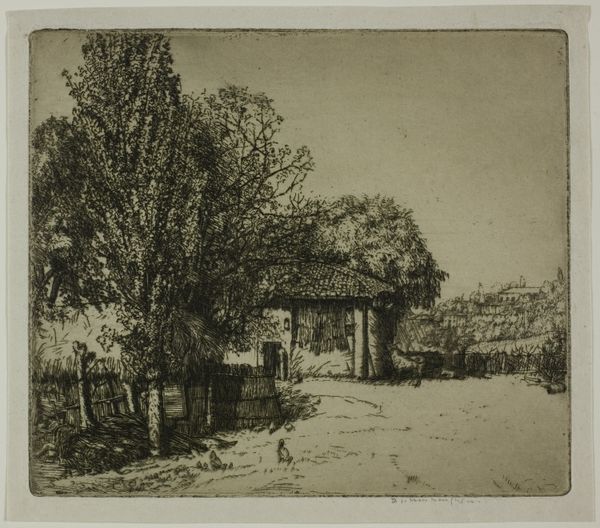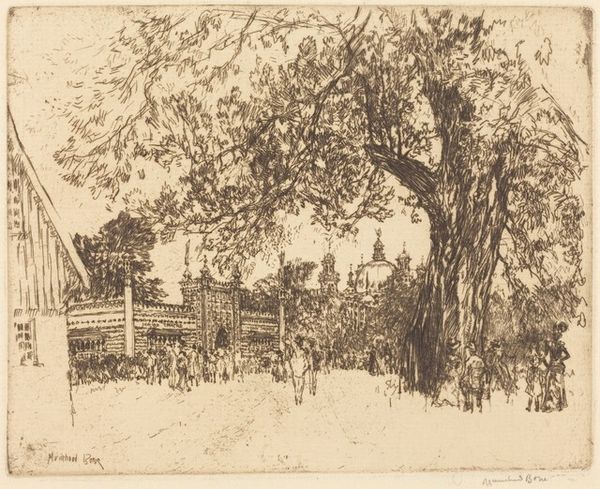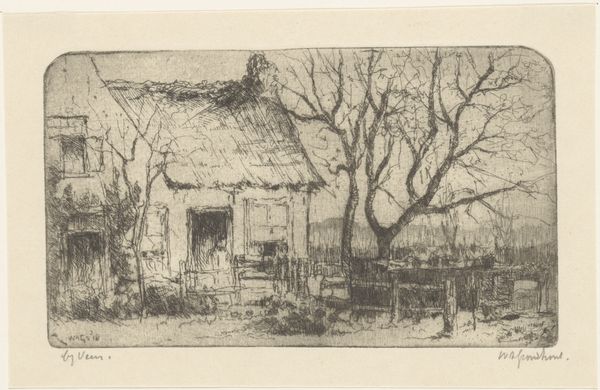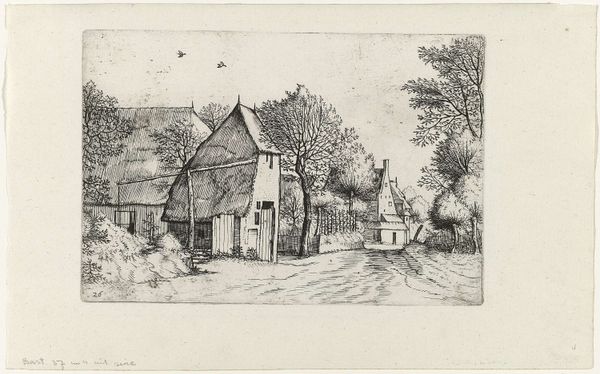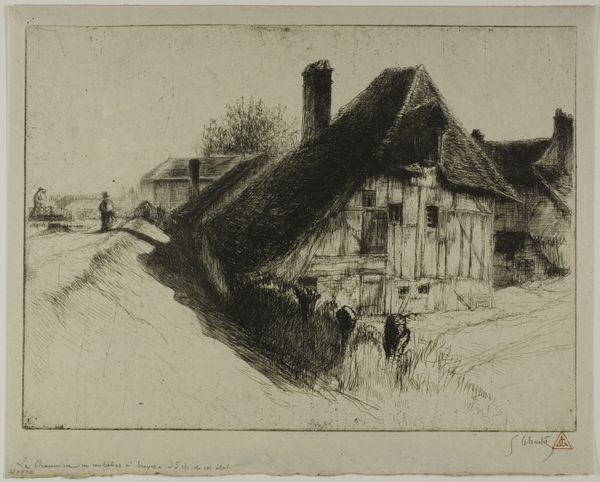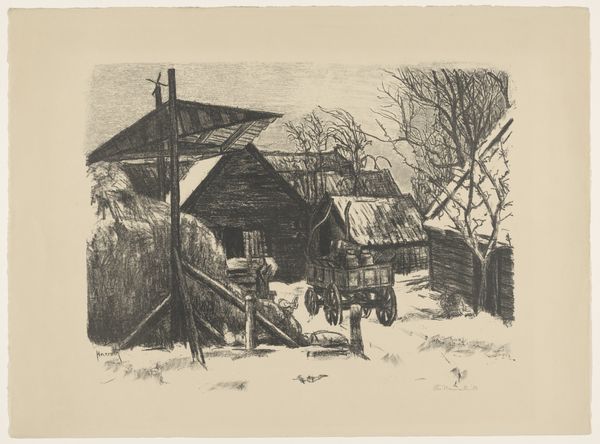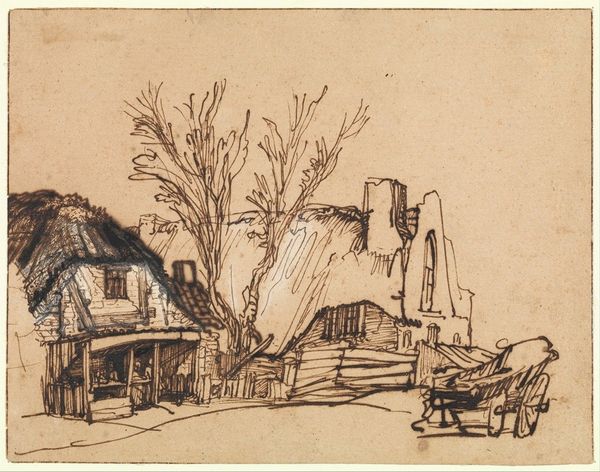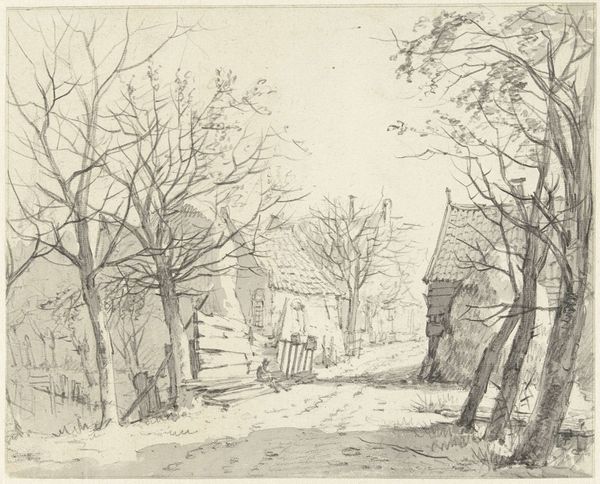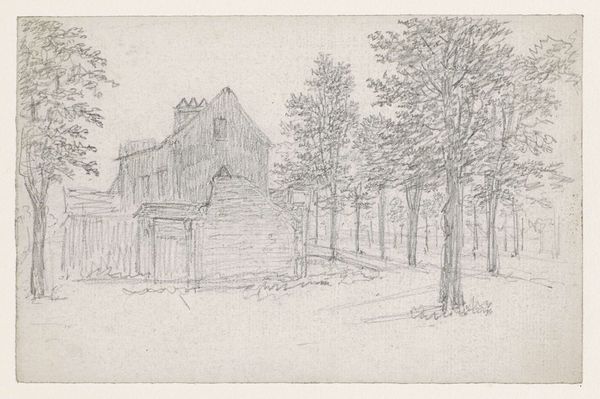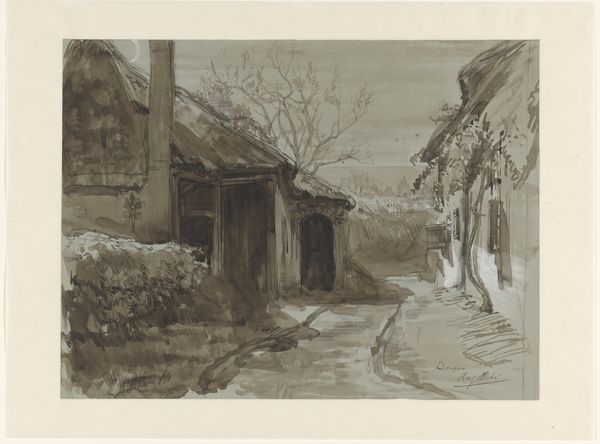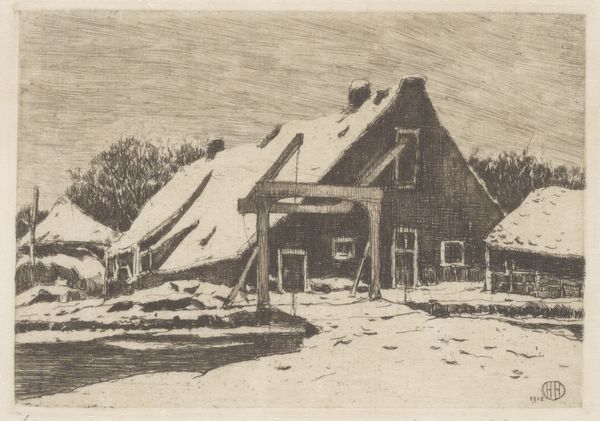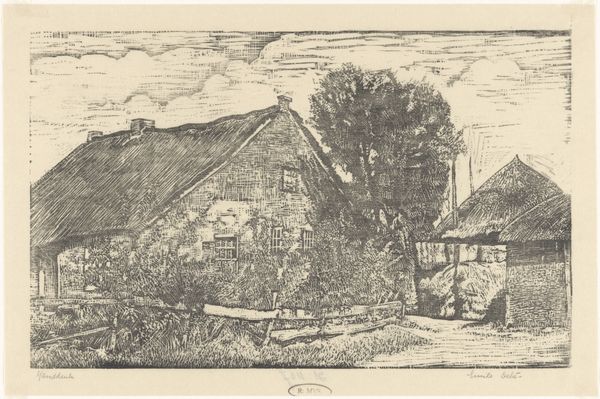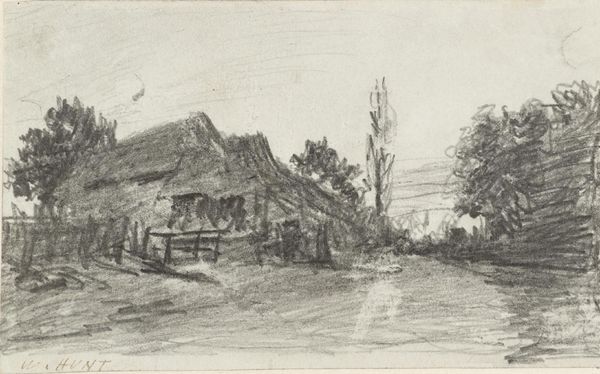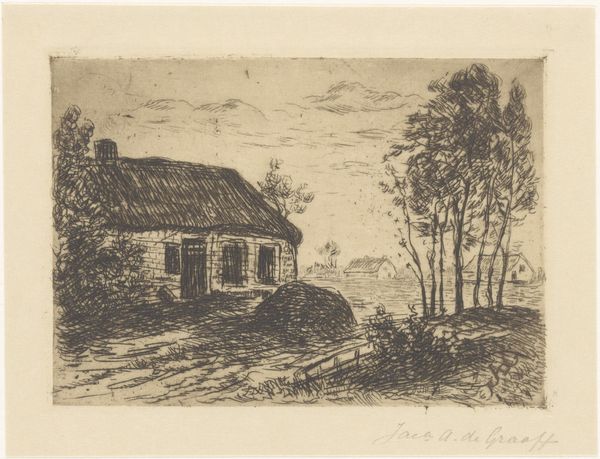
print, etching
# print
#
pen sketch
#
etching
#
landscape
#
form
#
scottish-colorists
#
line
#
realism
Copyright: National Gallery of Art: CC0 1.0
Editor: So this is "Old Balshagray" by David Young Cameron, etched in 1891. It feels…almost like a memory. There’s a strong sense of place, but also of something fading. What do you see in this piece? Curator: It’s interesting you say that. Considering the socio-economic context of late 19th century Scotland, where rapid industrialization was displacing traditional rural communities, I see this etching as a powerful commentary on loss and resilience. Notice how Cameron meticulously renders the details of the thatched roof and stone walls, yet the figures are small, almost spectral. Editor: That's true, they're definitely not the focus. So you see the scale as intentional, emphasizing the fading presence of the people in relation to the enduring structure? Curator: Exactly. Think about the politics embedded in representing the rural experience at a time when urban life was being romanticized. What does it mean to depict a scene that is both picturesque and potentially disappearing? What kind of gaze does it invite, and who is invited to look? Editor: That makes me reconsider my initial impression. It's not just a nostalgic view, but a statement about societal change and perhaps even a critique of it. So it is inviting conversation, but it feels a bit more assertive than passive observation. Curator: Precisely! And what does it suggest to you that Cameron belonged to the Scottish Colorists, who were so concerned with form and color, yet here he works primarily in line, creating a very tonal, almost monochromatic, effect? Does this serve to further "distance" the people from the landscape and place? Editor: Wow, that puts a new spin on the Scottish Colorists! It seems that sometimes sticking to realism might deliver the boldest messages. Thanks for showing me these ways of reading beyond just the aesthetic surface. Curator: My pleasure! It's in the dialogue between the artwork, its context, and our interpretations that true understanding emerges.
Comments
No comments
Be the first to comment and join the conversation on the ultimate creative platform.
